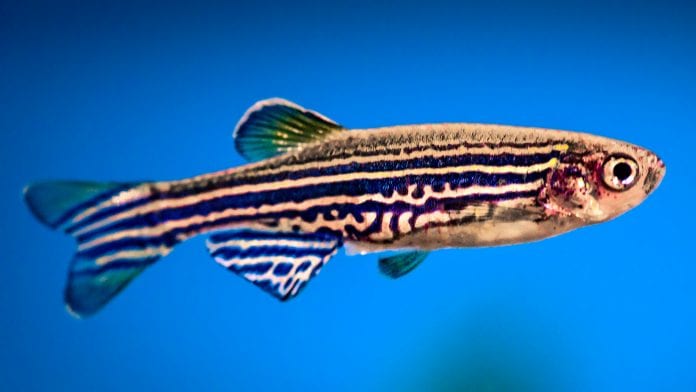
An immune cell is shown for the first time to be involved in creating the scar that could help to repair the heart after a heart attack.
Zebrafish, a freshwater fish native to South Asia, is known to be able to fully regenerate its heart after damage due to the formation of a temporary scar as new cardiac muscle cells are formed.
Professor Paul Riley and his team at the University of Oxford have been striving to understand and compare the composition of the cardiac scar in different animals as part of ongoing efforts to investigate whether it can be modulated to become a more transient scar like that of the zebrafish, and therefore potentially avoid heart failure in heart attack patients.
The study has been funded by the British Heart Foundation (BHF).
Heart regeneration
The researchers used three different models of studying heart repair and regeneration; the adult mouse heart, which behaves in a similar way to the human heart, the neonate mouse heart, which can regenerate up to seven days after being born before losing that ability as the mouse ages, and the zebrafish which can regenerate the heart up to adulthood through forming a transient scar.
Professor Paul Riley said: “Efforts to treat heart attack with cell replacement strategies to-date have largely failed with disappointing clinical trial results. One reason for this is the local environment into which the new cells emerge: a cytotoxic mixture of inflammation and fibrosis which prevents their engraftment and integration with survived heart tissue.
“Consequently, there is an urgent unmet clinical need to condition the local injury environment for efficient replacement of lost tissue. Major targets for this are the immune cells which invade the heart after injury causing inflammation, and the process of scar formation itself (fibrosis) during which immune cells signal to myofibroblasts to deposit collagen.”
The team focussed their efforts on studying the behaviour of macrophages, cells normally associated with inflammation and fighting infection in the body, when exposed to the three post-injury environments.
They extracted macrophages from each model to examine their gene expression. In both mouse and fish macrophages, they found that they were showing signs of being directly involved in the creation of the molecules that form part of the cardiac scar, and particularly collagen, which is the main protein involved.
BHF CRE Intermediate Transition Research Fellow and Lead Researcher Dr Filipa Simões said: “We have identified a new evolutionarily conserved role for macrophages that is really challenging the current dogma that myofibroblasts are the sole cells contributing to the cardiac scar, that we believe could also be applied to the human heart.
“To effectively repair the heart, broadly speaking you need two things: one, you need to modulate the permanent scar into a transient scar and two, you need to replenish all the heart muscle cells and blood vessels that have been lost through injury.
“Before we are able to move to clinical trials and help heart attack patients, we need to carry out more fundamental basic research to try and deeply understand the mechanism by which macrophages can contribute to the scar.”
Professor Jeremy Pearson, Associate Medical Director at the BHF, said: “Our hearts struggle to repair themselves following the damage caused from a heart attack. This can lead to heart failure, an incurable condition with worse survival rates than many cancers. We urgently need to find ways to repair the heart when it’s damaged.
“Macrophages are an important part of our immune system, removing dead and dying cells and helping to repair damaged tissue. By showing that macrophages produce collagen, a key part of scar tissue, this research could lead to new ways to enhance repair after a heart attack.”









